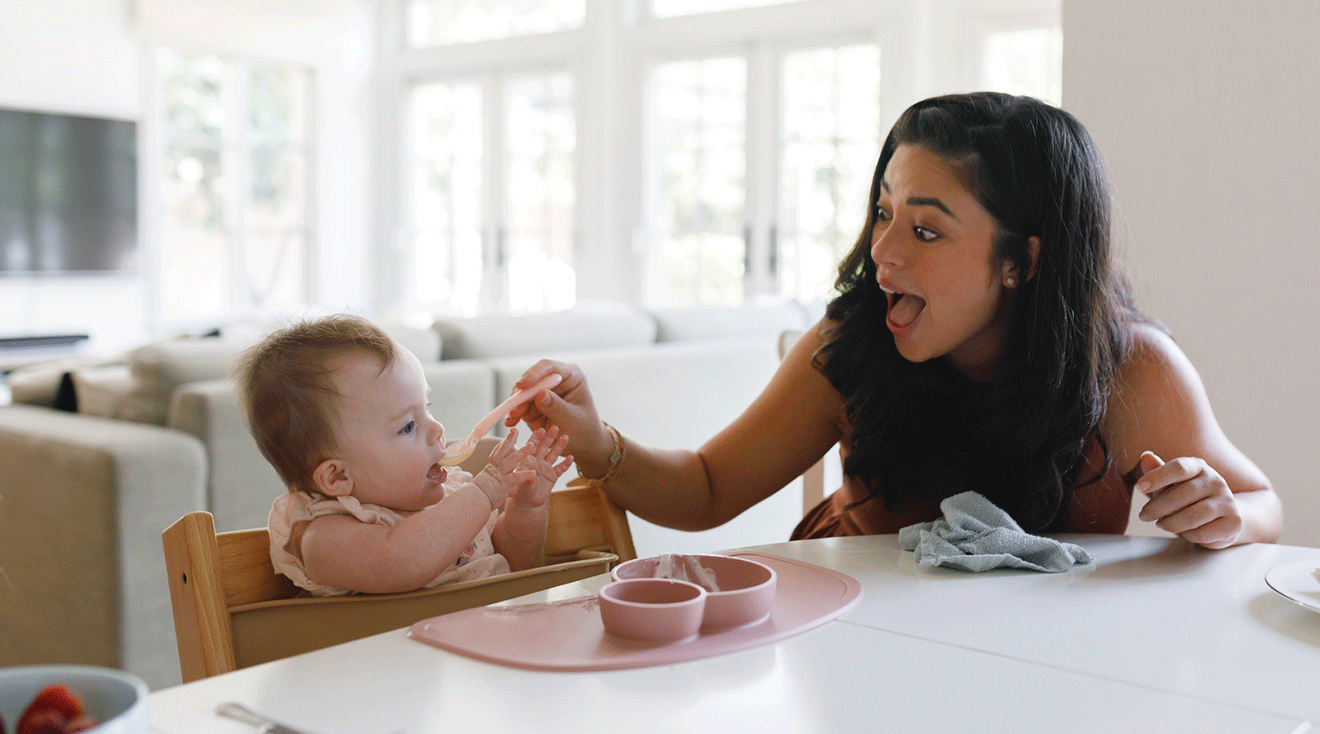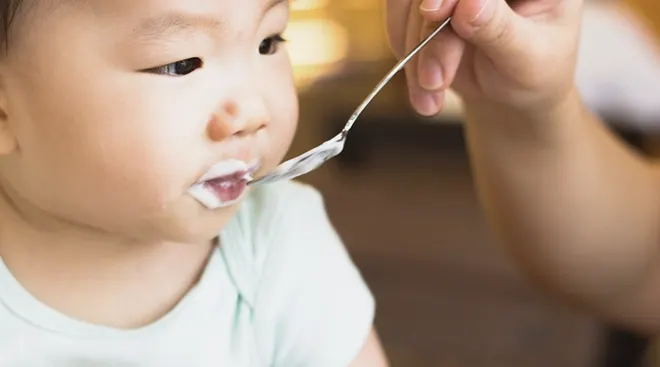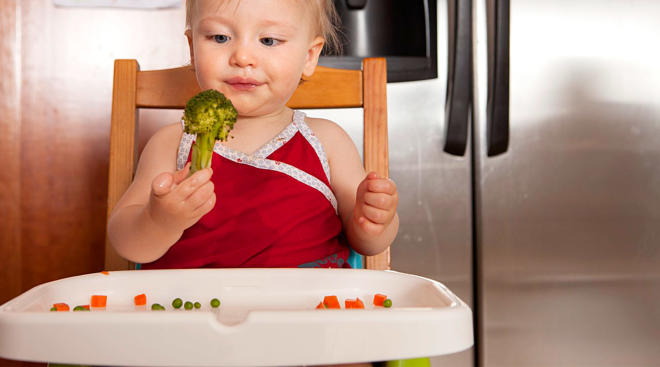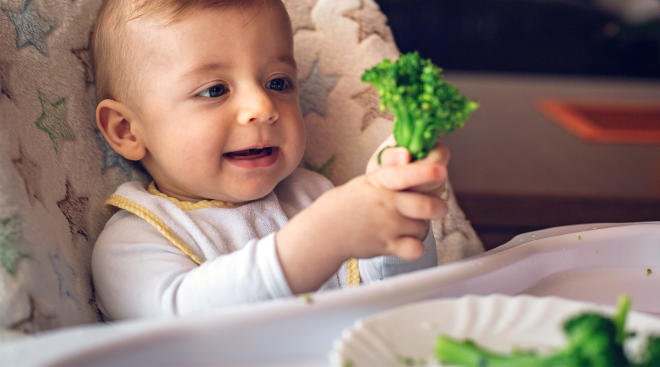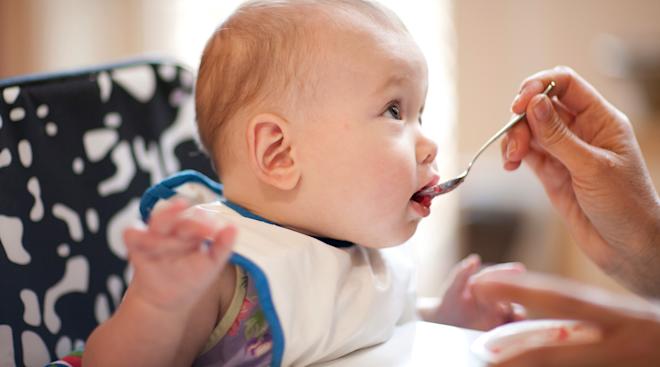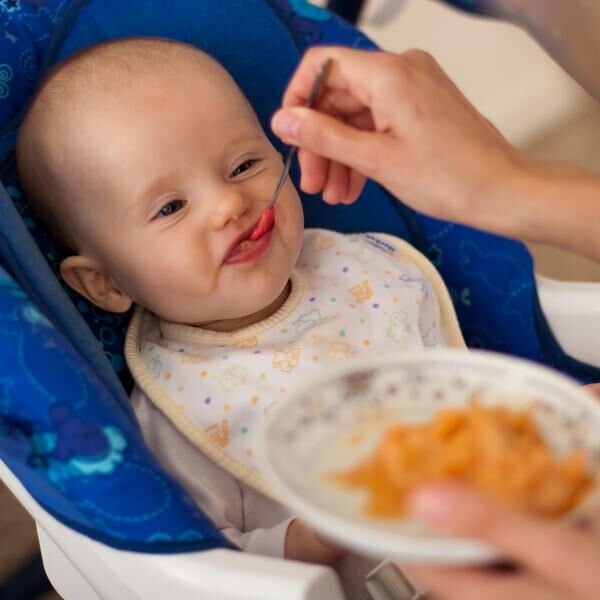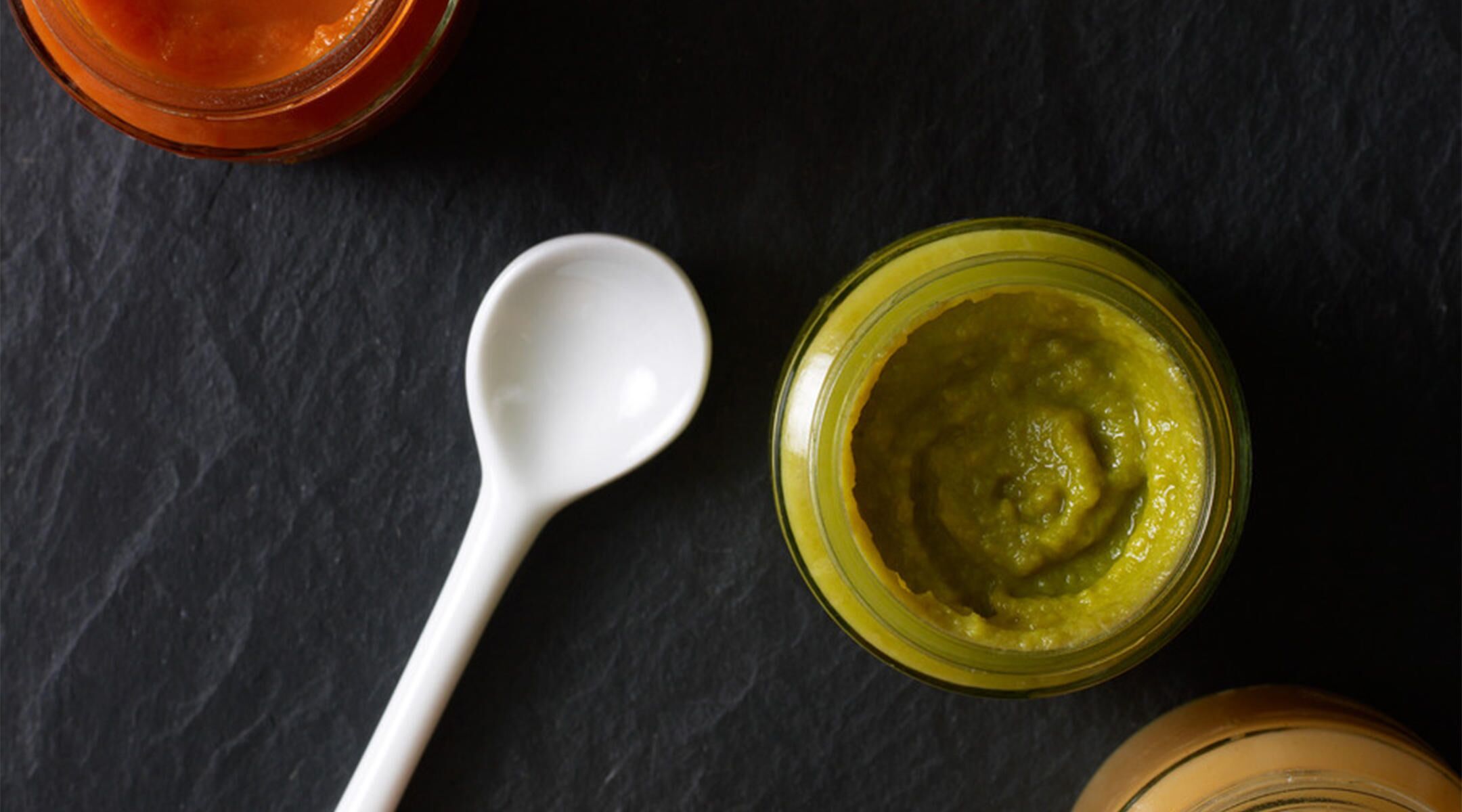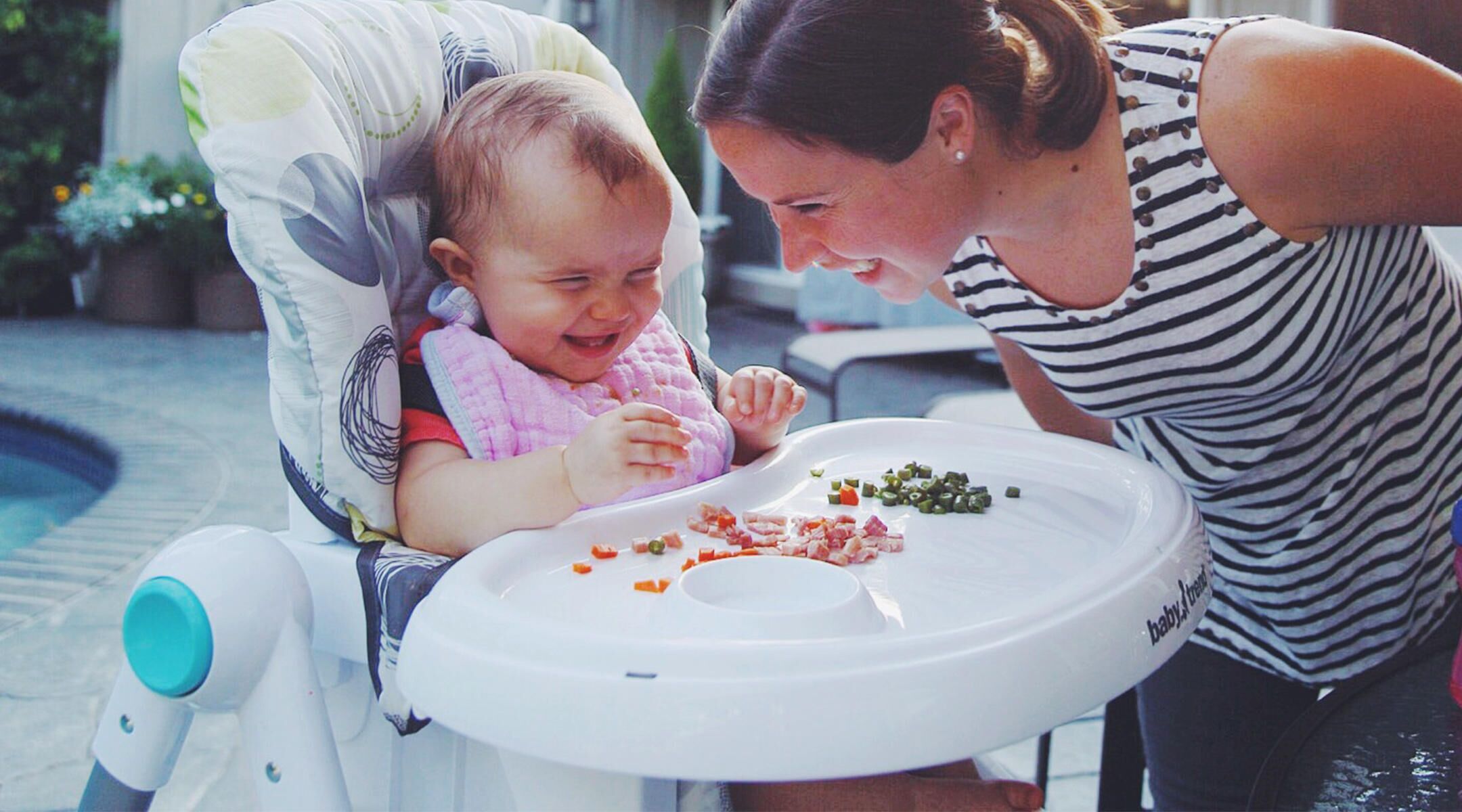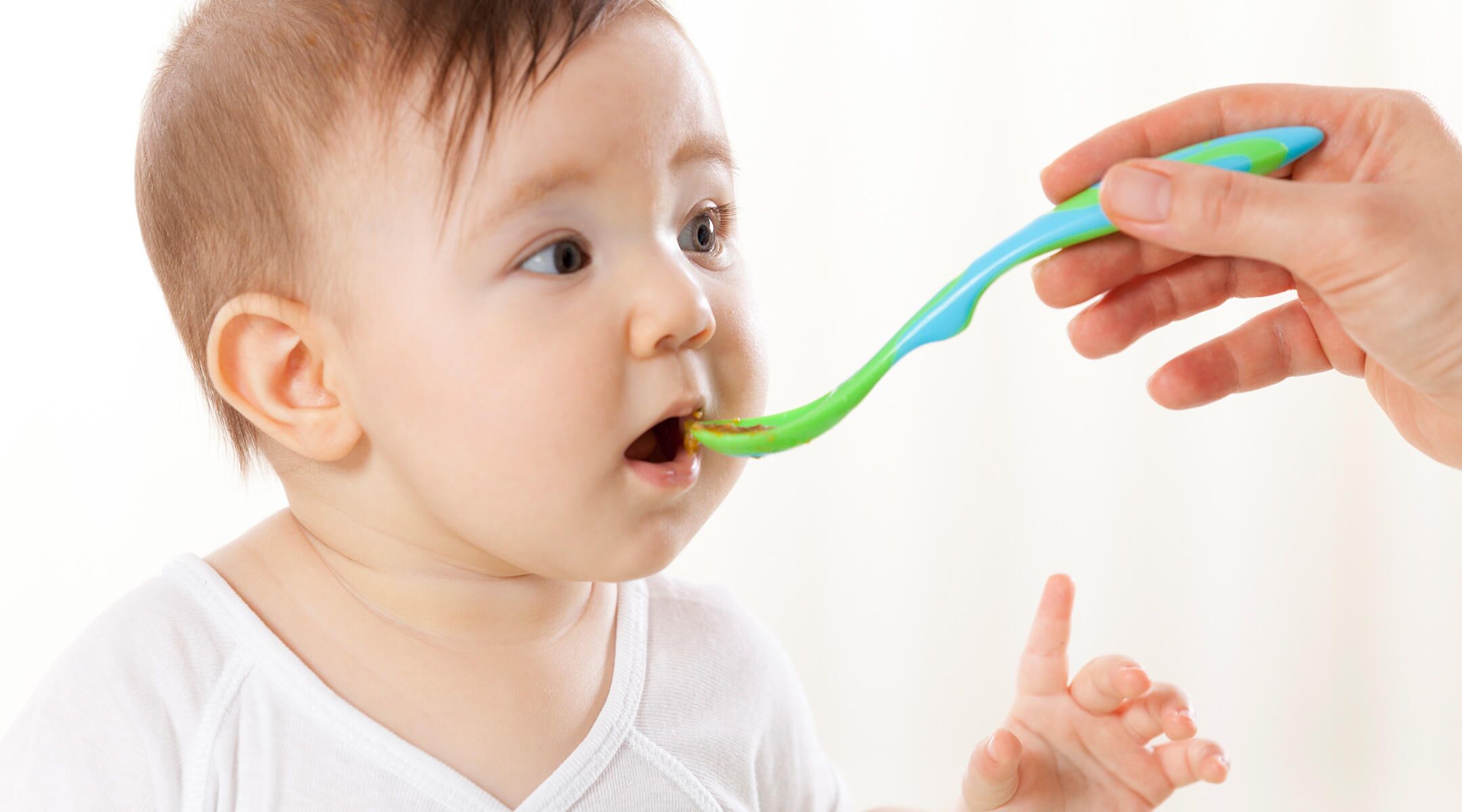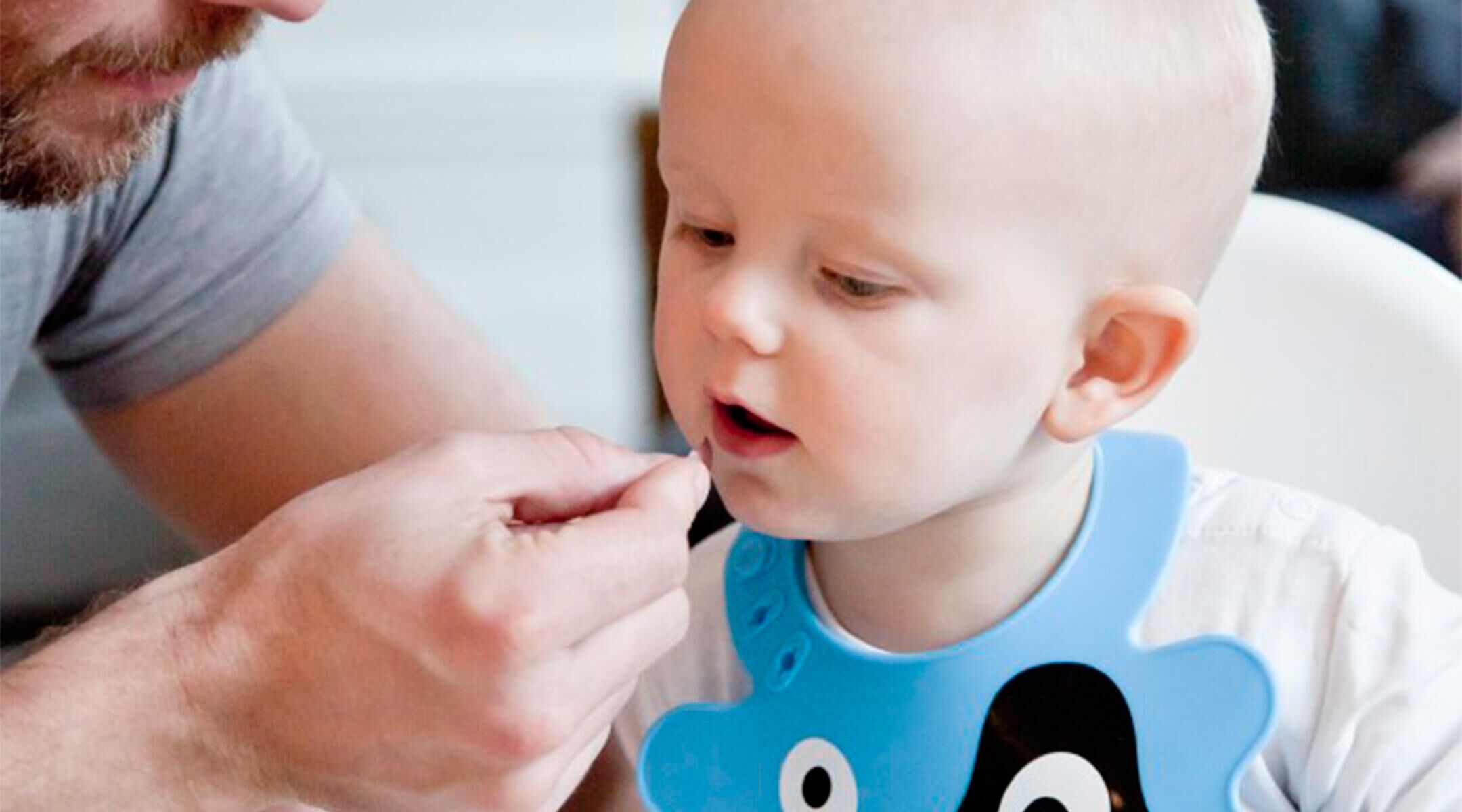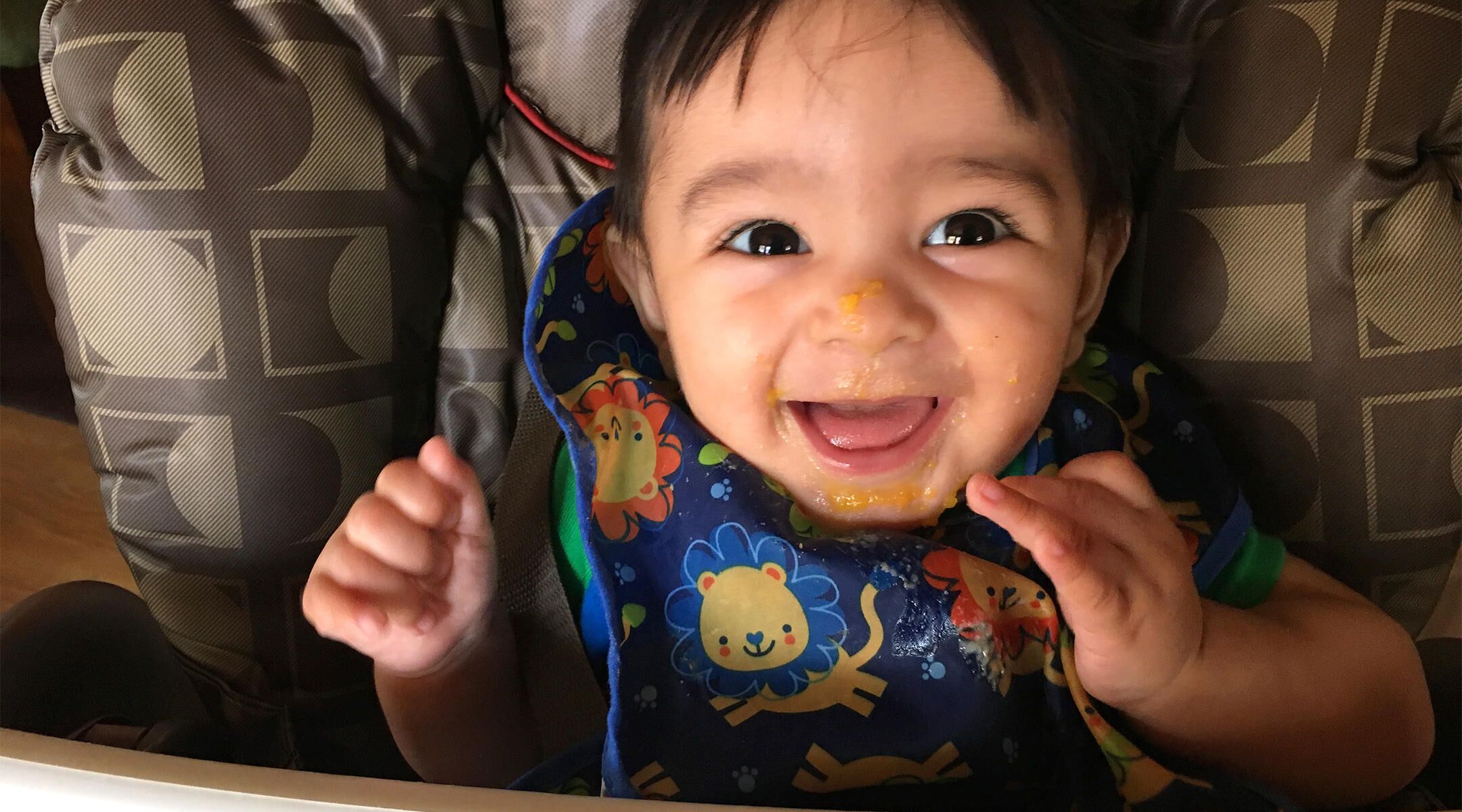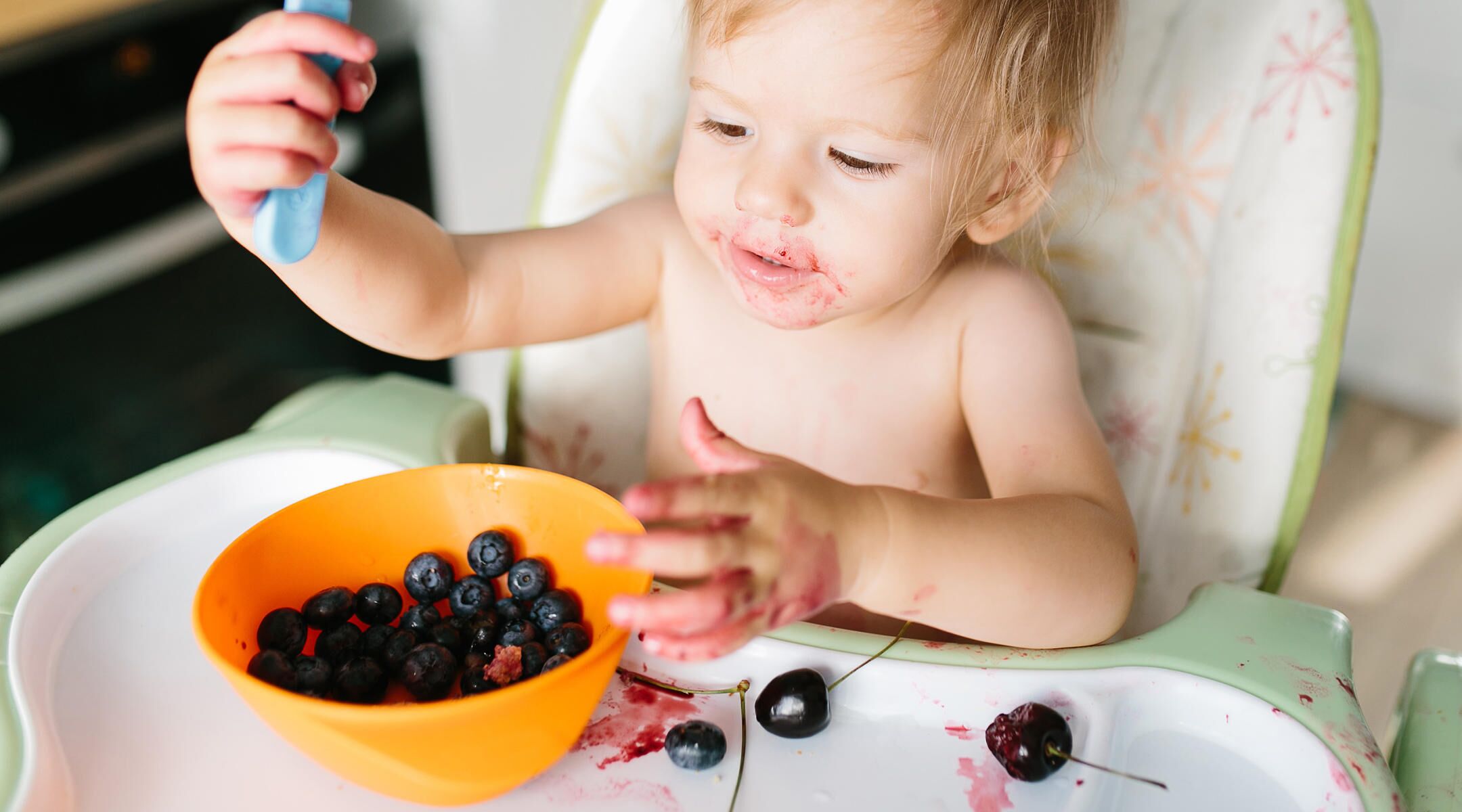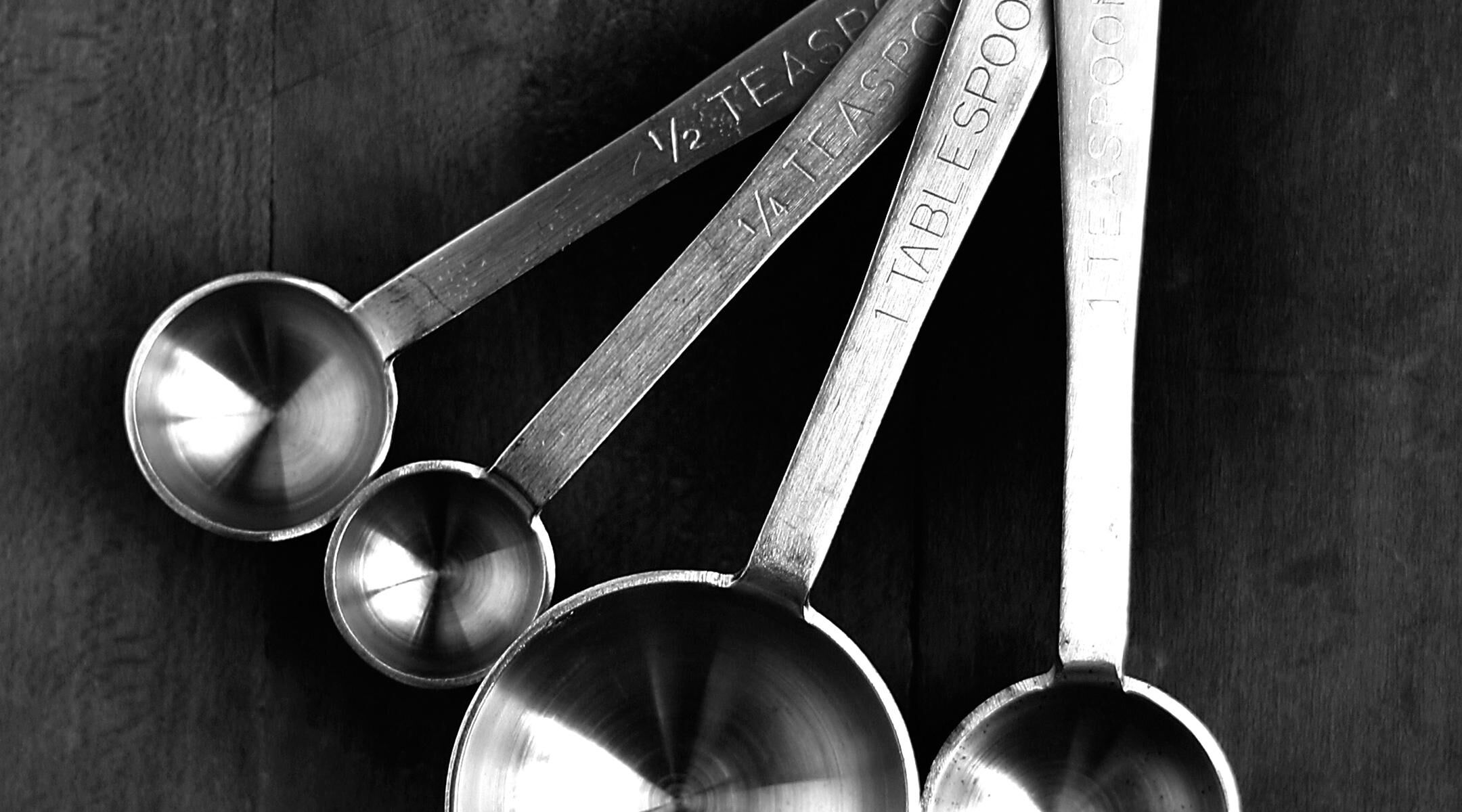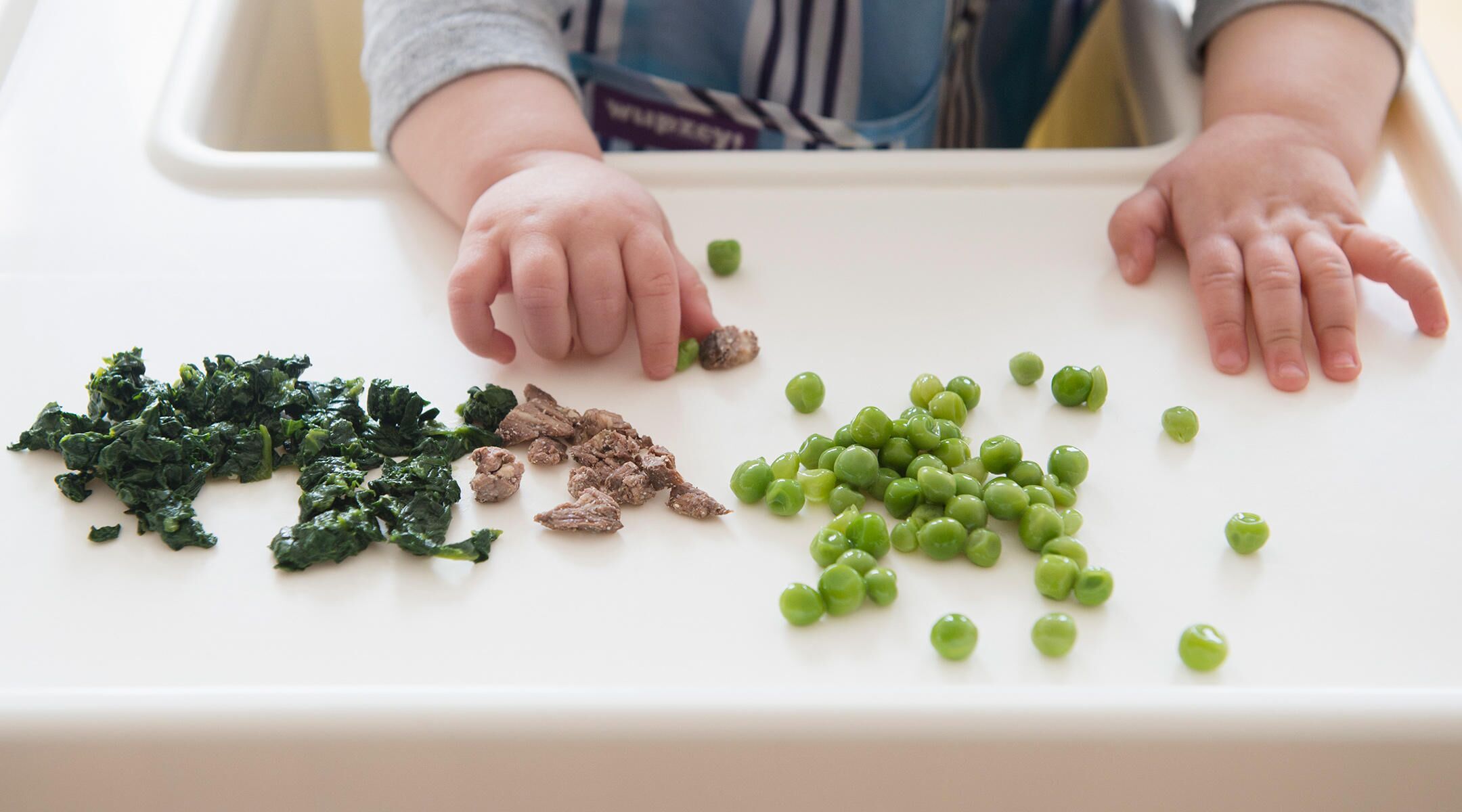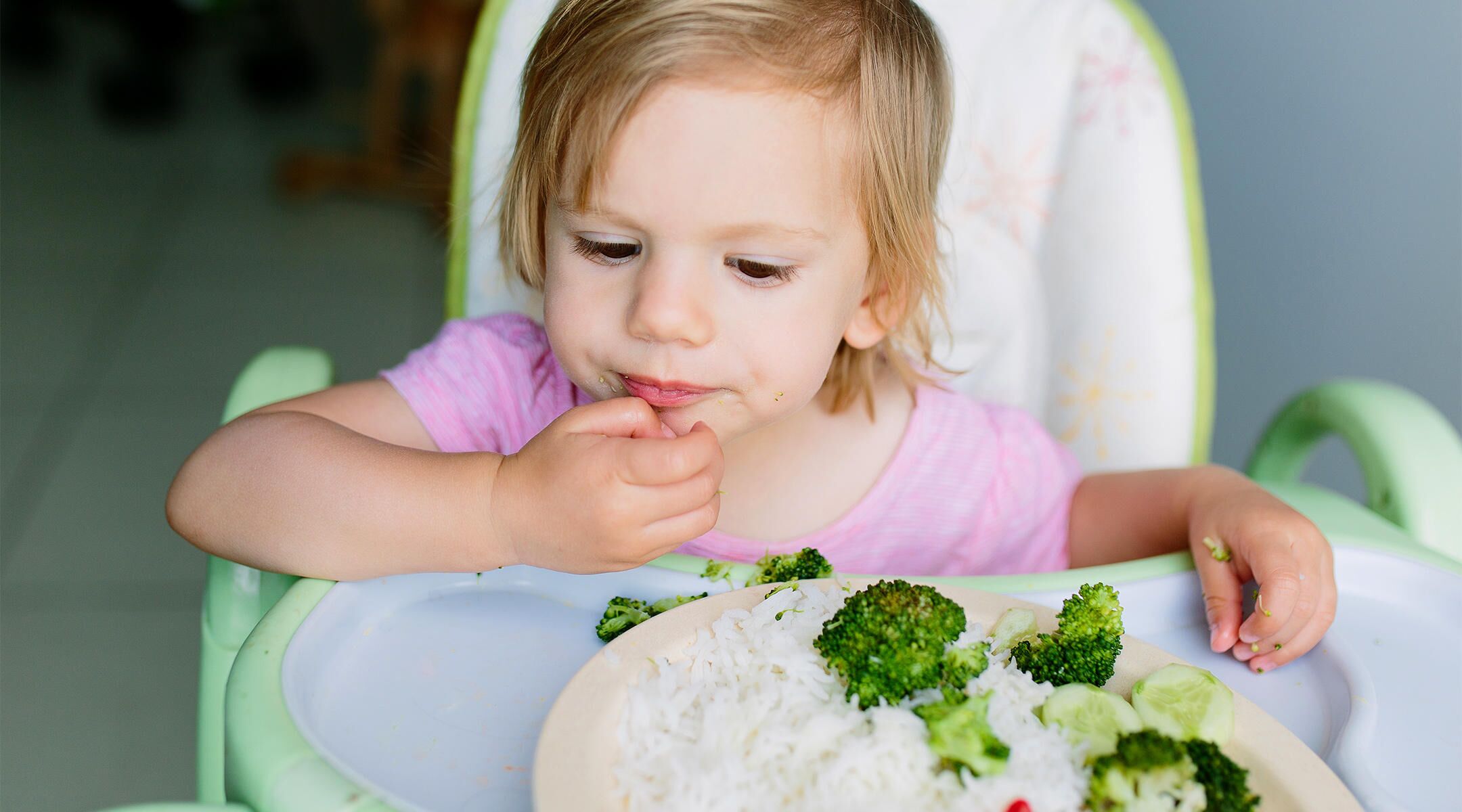When Can Babies Eat Food? Introducing Solids to Baby
Starting solids is an exciting and important milestone in baby’s development—one that not only opens them up to a brand-new world of flavors and textures, but also puts them on the right path to growing healthy and strong. But when can babies eat food? And how should you go about introducing solids to baby? Here’s what you need to know about how and when to start baby food for a smooth transition, plus some good options for baby’s first food .
Knowing when to start baby food is both crucial and tricky. Starting baby on solids too early means you might increase the risk of choking, obesity and bellyaches, but introducing solids too late means you might slow baby’s growth and inadvertently foster an aversion to solid foods, among other issues. So when can babies eat solid food? Fortunately, experts have zeroed in on a sweet spot for starting baby food, which is sometime between 4 and 6 months of age, says Preeti Parikh, MD, a pediatrician in New York City and clinical assistant professor at Icahn School of Medicine at Mount Sinai.
However, you’ll want to treat this as a true food introduction in terms of flavor and texture, rather than as a means for nourishment—when starting solids, baby typically won’t eat more than an ounce in one sitting. Ideally, baby should be receiving their nutrition exclusively from breast milk or formula until the six-month mark, according to the American Academy of Pediatrics (AAP). (Baby will likely still continue to get most of their nourishment from breast milk or formula until their first birthday.). “For babies starting solids [around] 4 months, it’s more about learning how to eat and handle different textures,” says Elizabeth Cilenti, MD, MPH, a pediatrician with Northern Virginia Family Practice. “Baby isn’t going to be getting a lot of nutrition from these solid foods early on.”
Wondering how to tell if it’s time to start solids for your little one? Baby will give you clues. Here are some signals to watch for.
- Baby can comfortably sit in a high chair independently: This is a major sign in terms of when to start baby food, says Lauren Kupersmith, MD, a pediatrician at Hassenfeld Children’s Hospital at NYU Langone in New York City. It means baby can hold their head up and doesn’t need to be propped up to stay in the upright position, which is important to avoid choking.
- Baby looks interested at mealtime. Babies like to mimic what we do, so if your child likes to sit up and watch you eat, or they like to grab at your food, then by all means let them try eating too, Parikh says.
- Baby’s outgrown their tongue thrust reflex. The tongue thrust reflex is neurological and occurs when baby pushes a spoon or food out of their mouth, Cilenti says. Per the AAP, this isn’t because they don’t like it, but rather because they can’t seem to get the food to where it needs to go. Hold off on starting solids until baby can move food to the back of their throat to swallow.
- Baby can bring their hand to their mouth. Cilenti cites this as a sign to look for, as it’ll come in handy when baby’s ready to self-feed.
Alongside these signs, discuss the best time to start solids with your pediatrician at baby’s four-month checkup, Parikh advises. Before starting baby on solids, you’ll also want to take a baby CPR class. “While we hope that you never have to use it, it’s always better to know what to do if your baby chokes or has a medical emergency,” Cilenti notes.
At 4 to 6 months, most of baby’s nutrition will still come from breast milk or formula, so don’t worry if baby doesn’t like eating food right away. (Also, never put cereal or any other food in baby’s bottle—it’s a choking hazard.) Introducing solids is a gradual process, and every baby learns on their own timeline. Here are some general expert guidelines for how to start baby on solids:
- Start slowly. To make it easier for baby to get accustomed to the idea of swallowing solids, start mealtime with a little breast milk or formula, then offer some food. When introducing solids to baby, a half spoonful will do at first—you may even want to talk baby through it with words and sounds like, “yummy” and “mmm, this is good,” the AAP notes. Finish the feeding with more breast milk or formula—this helps prevent baby from fussing if they’re hungry. If baby cries or turns away when you present the spoon, try again some other time.
- Introduce foods one at a time. Once you’ve introduced a new food, avoid giving them another new food for two to three days. This makes it easy to track whether baby has any reactions and is allergic to a particular food, Cilenti says.
- Try new foods more than once. Since baby’s taste will evolve, you may need to try a food several times before they actually like it, says Kupersmith. “Once baby has tolerated single foods, it’s okay to mix two foods together rather than just feeding them the same thing over and over again for several days,” Cilenti adds.
- Try foods in different forms. If baby doesn’t like pureed food, try it mashed. After all, baby is learning about new textures as well as new tastes. It may be a case of trial and error until you find a winner. (Just make sure all solids are soft, pureed or mashed to prevent a choking hazard.)
- Consider baby-led weaning: Baby-led weaning is another feeding method to introduce baby to solids, but it relies on following their cues. Instead of feeding babies more traditional baby food, like purees, it involves self-feeding and using finger foods as baby’s first food. “I typically advise families who want baby-led weaning to wait until the baby is around 6 months old, has reasonable head control and can get their hands into the food and then into the mouth,” Cilenti says.
Ultimately, every parent’s timeline for when to start solids will vary. “This is really up to your family and your preferences,” Cilenti says. However, she notes most parents will start off introducing solids at one meal a day, then slowly work their way up—or you might even try introducing solids twice per day to help baby get accustomed. Really, this will depend on what works best for your family’s schedule.
In terms of which meal to pick, the morning is a good time to start, as baby’s often hungriest then. It also gives you more time to watch out for possible reactions, Parikh notes. However, some families may choose to start solids in the evening in hopes it’ll help baby sleep longer at night, Cilenti says. “While this is only sometimes the case, it’s okay to give baby solid food before bedtime.” Though if you find baby’s spitting up more after eating solids, it may be better to start earlier in the day to keep it from actually disrupting their sleep.
Once baby is older than 6 months, Cilenti recommends giving babies more opportunities to explore food at meal times. While they’ll still get their nourishment from breast milk or formula at this age, they may be more interested in the food you’re eating.
At around 9 months, baby should have already worked their way up to a variety of foods, including cereal, vegetables, fruits, meats, eggs and fish. This is a great time to start introducing new textures, Parikh says. In fact, baby’s diet may resemble yours, but with much smaller pieces and softer textures.
Between 9 and 12 months, baby may eat two snacks and three meals daily, per the Centers for Disease Control and Prevention (CDC) says. They may consume between 4 and 8 ounces of solids at meals and between 2 and 4 ounces of solids for each snack.
Again, how often you feed baby solids will depend on how quickly they warm up to them. But don’t ever force foods—if baby repeatedly refuses to try something new, they’re simply not ready yet.
Got baby safely strapped into their high chair with bib fastened? You’re ready to finally start feeding baby solids! There aren’t any official food rules for babies starting solids, and there’s no scientific evidence suggesting you should introduce one type of food before another, assuming the foods aren’t choking hazards. (Pay close attention to size and texture—food bites should be small and easily gnashed by baby’s gums. Avoid foods that are chunky (like nuts), sticky (like undiluted peanut butter) and round (like uncut grapes).)
Many view single-grain baby cereal (often rice cereal or oatmeal) mixed with breast milk or formula as an “easy training food,” for baby’s first solids, Kupersmith notes. You can also mix it with more milk to achieve a thinner consistency. (It’s also rich in iron, an important element for neurodevelopment.) However, experts note there’s no scientific data that says you have to start with that. “We used to say that you should start cereals first and then add fruits and vegetables and finally, meats. However, we’ve actually started recommending more that babies start iron-rich meats as one of the first foods they eat,” Cilenti explains. “It’s fine to give baby various foods, different textures and flavors, though we usually recommend avoiding a lot of added salt or sugar.” Similarly, you may have heard it’s better to introduce vegetables before fruits to help baby like them more when they grow up, but there’s no evidence behind this. Babies innately love sweets, and the order of introducing solids to them doesn’t change that.
All this to say, whole grains strained, mashed or finely pureed fruits and veggies (like bananas and sweet potatoes) and yogurt (for babies 6 months and up) are all great for baby’s first solid foods. If your child has been breastfeeding, check with your pediatrician about getting a jump on pureed chicken or beef when you’re starting solids. According to the AAP, these foods contain easily absorbable forms of iron and zinc, which baby needs by 4 to 6 months.
While these are helpful guides, don’t stress too much about the best first food for baby—simply start introducing solids with something you think baby will like. Here are a few common first foods for baby that are healthy and easy to eat (and, in the case of sweet potato and banana, also easy to digest). Whatever you decide to feed baby, cook it to soften if needed, then mash it with a fork or puree before serving whenever introducing solids.
- Infant cereal, such as baby oatmeal, rice, barley
- Sweet potato
- Banana
- Avocado
- Apples
- Pears
- Green beans
- Butternut squash
Foods to avoid for babies
While there’s plenty baby can eat, certain foods should be avoided for now. Save honey and cow’s milk for after baby’s first birthday—there’s a risk for infant botulism with honey (a type of bacterial poisoning), and baby’s tummy isn’t prepared to digest large amounts of cow’s milk until they’re about one year old (some yogurt and cheese before this time is fine though), Parikh says.
Additionally, avoid processed foods and foods that are choking hazards (such as sticky foods, like large gobs of peanut butter; hard foods that are difficult to gum, like raw vegetables, nuts, seeds and popcorn; and round, slippery foods that haven’t been cut up, like grapes and cherry tomatoes). Instead, the first foods for baby, and those in the months that follow, should be soft and served mashed, pureed or (once baby seems ready to move up from the really mushy stuff) cut up into really little bits.
Wondering what the deal is with allergens? Pediatricians used to advise staying clear of common allergen foods, but based on recent research, the AAP now says there’s no need to wait (more on this below).
Hesitant about improvising baby’s first foods? That’s okay too. If you prefer an “introducing solids chart” to help you plan out baby’s path by age, the guide below can come in handy.
Curious about allergenic foods when introducing solids to baby? Much of the confusion around when to start baby food stems from questions concerning allergenic foods. These are foods that babies are most often allergic to. The major culprits include dairy, eggs, fish, soy, shellfish, wheat, sesame seeds, peanuts and tree nuts. In the past, parents were advised to hold off on exposing baby to these foods, but now doctors recommend introducing them early, often and in an age-appropriate format, which means starting off with purees and soft textures. This may lower baby’s chances of developing an allergy, Parikh explains. (Note: If baby has severe eczema, your pediatrician may recommend having allergy testing done before you introduce allergenic foods, per the AAP.)
“Dairy is an easy starting point, given options such as yogurt and cheese,” says David Stukus, MD, director of the Food Allergy Treatment Center at Nationwide Children’s Hospital and a spokesperson for the American College of Allergy, Asthma, & Immunology. You can also try scrambled eggs in small amounts, although baby may not be too pleased with the texture at first.
As far as peanut products go, the National Institutes of Health issued guidelines in 2017 that encourage parents to incorporate them into baby’s diet at 4 to 6 months of age. Giving babies peanut products before the age of one actually decreases their risk of developing a peanut allergy before age 5 by 81 percent, compared to kids who are introduced to peanuts later in life. Peanut butter can be thinned out with water or mixed into infant cereal, or a fruit or vegetable puree, and peanut powder can also be mixed into cereal and fruits. Don’t give whole peanuts or pieces of peanuts, since they’re a choking risk.
If baby’s poop is loose, watery, bloody or full of mucus, it could mean their digestive tract is irritated, the AAP notes. Reduce how many solids you give baby and then slowly reintroduce them. However, if baby continues to have loose stools with solids, talk to your pediatrician to figure out the cause. Similarly, you’ll also want to flag any signs of food allergies. Per Johns Hopkins Medicine, these include:
If baby has a food allergy, you’ll notice a reaction within minutes or up to two hours after eating the problematic food, Stukus says. If the symptoms are severe, call 911 right away. These reactions may look similar to other medical conditions, so talk to your pediatrician; they can help confirm whether it’s an allergy or some other type of condition (such as a viral illness). Ultimately, if you have any concerns about baby’s reactions to solids, potential allergies or questions about their gastrointestinal changes, don’t hesitate to reach out to your pediatrician.
Frequently Asked Questions
Do parents have to start feeding solids by 6 months, or can you wait?
While you don’t have to start baby solids at 6 months per say, experts say it’s a good idea. Not only does it support baby’s growth, but it ensures they “develop the oral and motor skills needed to eat, chew and swallow,” Cilenti explains.
What if baby doesn’t want solids?
“Most children will eventually get the hang of eating solids, though it does take a little learning,” Cilenti says. “The most common reason I see parents saying the baby doesn't want solids is a persistent tongue thrust reflex, which usually goes away between 4 and 6 months.” If baby isn’t interested in solids when you first introduce them, try again on a different day, maybe even with a different food.
What are baby food stages?
Cilenti says there are three stages in baby food. Stage one consists of mostly pureed food without any texture or chunks. Stage two is thicker consistency foods with a little texture and are usually given to babies older than 6 months. Stage three consists of foods that are soft, chewable chunks, given to babies ages 9 to 12 months. “Stage three often consists of combinations of foods,” she adds.
What food do babies love the most?
Again, this will vary depending on your child. “Every baby is different and is going to show different preferences for different foods,” Cilenti says.
How often should baby poop after starting solids?
Again, “there's a lot of variability here,” Cilenti says. Some babies may poop more after starting solids, while others may poop less. Per the AAP, stools will usually be more solid and varied in color, thanks to foods like peas and beets. It may also have a different smell due to the added sugars and fats in their diet. Baby’s stools will continue to vary as their digestive system matures, and they may become more gassy with the introduction of solids. But, as long as “their stool is soft and easy to pass, it's usually not a concern,” Cilenti says.
Should I be concerned about mercury in baby food?
“There's been a lot of concern about this since a 2021 Congressional report looking at heavy metals found in baby foods,” Cilenti points out, referring to heavy metals such as mercury, arsenic, cadmium and lead. “To take a step back, these are metals found in the environment primarily due to contamination from pollution, but they eventually find their way into the soil and water, where they're absorbed into plants. The heavy metals can come along when we process those plants into baby food.” The baby foods that absorb more of these contaminants include rice cereals and root vegetables. “Unfortunately, this isn't limited to baby food but to foods that we buy and then process into baby foods on our own,” Cilenti adds. Her advice for avoiding heavy metal contamination in baby’s diet is to ensure baby eats a wide variety of food.
Is it okay if baby drinks less milk after starting solids?
In a nutshell, it’s okay, but if you’re concerned about baby’s growth, talk to your pediatrician. As mentioned, babies will continue to get most of their nutrients from breast milk or formula, but it’s normal for them to start drinking a little bit less. “It’s really more about them learning how to handle new textures and swallow solid foods,” Cilenti adds. How much milk they drink will vary depending on how quickly baby takes a liking to solid foods.
Introducing solids to baby is an exciting milestone, but remember there’s more than one right way to do it, Cilenti says. Always reach out to your pediatrician with questions, but don’t stress the small stuff too much—and enjoy this next chapter as a family!
Please note: The Bump and the materials and information it contains are not intended to, and do not constitute, medical or other health advice or diagnosis and should not be used as such. You should always consult with a qualified physician or health professional about your specific circumstances.
Plus, more from The Bump:
Elizabeth Cilenti, MD, MPH, is a pediatrician with Northern Virginia Family Practice. She completed her medical degree and residency at Indiana University School of Medicine and her master’s degree in public health at the Harvard T.H. Chan School of Public Health.
Lauren Kupersmith, MD, is a pediatrician at Hassenfeld Children’s Hospital at NYU Langone in New York City. She earned her medical degree from New York Medical College and completed her residency at University of California, Davis, School of Medicine.
Preeti Parikh, MD, is a pediatrician with Westside Pediatrics, located in New York City and clinical assistant professor at Icahn School of Medicine at Mount Sinai, as well as a spokesperson for the American Academy of Pediatrics. She earned her medical degree from Rutgers University and completed her pediatric residency at Mount Sinai Hospital.
David Stukus, MD, is the director of the Food Allergy Treatment Center at Nationwide Children’s Hospital and a spokesperson for the American College of Allergy, Asthma, & Immunology. He earned his medical degree at the University of Pittsburgh School of Medicine and completed his residency at Nationwide Children's Hospital.
Healthy Children (American Academy of Pediatrics), Starting Solid Foods, August 2022
Centers for Disease Control and Prevention, How Much and How Often To Feed, April 2022
Healthy Children (American Academy of Pediatrics), Sample Menu for a Baby 8 to 12 Months Old, August 2022
Pediatrics (American Academy of Pediatrics), Updates in Food Allergy Prevention in Children, October 2023
National Institute of Allergy and Infectious Diseases, NIH-sponsored expert panel issues clinical guidelines to prevent peanut allergy, January 2017
Johns Hopkins Medicine, Food Allergies in Children
Karger International, The Development of Healthy Eating and Food Pleasure in Infancy, 2023
InformedHealth.org, In brief: How does our sense of taste work?, January 2023
Learn how we ensure the accuracy of our content through our editorial and medical review process.
Navigate forward to interact with the calendar and select a date. Press the question mark key to get the keyboard shortcuts for changing dates.
Advertisement
Advertisement
Advertisement
Advertisement
Advertisement
Advertisement
































